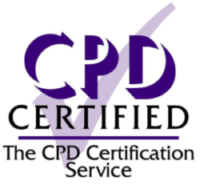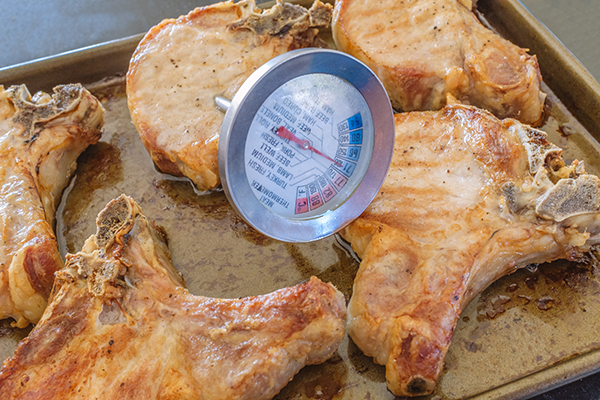It comes earlier every year doesn’t it? Christmas songs in the shops in October. Decorated trees in the supermarket foyer. You noticed that there were Christmas decorations in the gardening centres before the clocks went back. And then there are the parties which seem to be creeping into November nowadays, as diaries and restaurant bookings fill up. Lots of fun. Lots of illness too. So, let’s have a word about food hygiene,
The music will be throbbing. The lights will be low. Your judgement may be, how shall we put it? A little impaired. The heating will be on full blast and the buffet will be wilting by the time you get round to it.
Did I say wilting? I meant potentially deadly.
Warmer temperatures cause bacteria to multiply at a frenetic rate. Even if that chicken leg was perfectly chilled when it was put out, an hour or two on the buffet table means that it’s going to be bacterial dynamite by the time you pick it up and nibble.
It only takes as few as 10 E.Coli bacteria to make you ill. A bacterial colony can double its size in just 20 minutes in warmer temperatures. Summer is the season we most associate with food poisoning. Christmas comes a very close second.
So, here’s a few tips for when you do make your way to the party buffet.
PASTA SALAD
It’s a pasta salad. What could possibly go wrong? Well, quite a lot actually. Staphylococcal aureus is a type of bacteria found in human hair and skin. It is thus easily transferable to dishes which need prepping but no cooking. So, the caterer makes your pasta salad; what happens next? It’s placed on the buffet table whilst the guests hit the dancefloor. And it waits. And warms up. The effect of Staphylococcal aureus can be spectacular. It can make you sick within 6 hours. In some cases within 30 minutes. That’ll be a Christmas event to remember…
STUFFED EGGS
A staple of the buffet, a joy to behold when devilled and presented as a canape, and a highly effective transmitter of salmonella.
The eggs will be cooked of course but the stuffing may well not be. In some cases these little balls of joy may sit around for hours warming up. If any of the ingredients are raw or undercooked then the salmonella bacteria will grow to dangerous levels.
So, the rule of contact is this: If the eggs aren’t served on ice, don’t touch them. It’s pretty unlikely they will be.
SECONDS
A quick word about seconds. Don’t. Keep to firsts.
You tucked in a few hours ago but the buffet table is still there, groaning under the weight of all that lovely food. You’ve just begun to feel a bit peckish. Shame to let all that lovely grub go to waste…sidle up, grab a plate, dig in…
Not a wise move. From the moment the caterers placed the food on the table the bacteria started multiplying. Now four hours later, the bacterial presence on some of those foods is in the millions and doubling every 20 to 30 minutes.
Of course, a responsible caterer would know this and would have removed the food long before you had the opportunity to leap in and poison yourself. But it does happen…
FOOD HYGIENE
This is also the time of year when all those events, the parties, the family get-togethers require swathes of seasonal food handling staff. Responsible caterers ensure their temporary staff have the requisite Food Safety level 2 qualification – mandatory for those handling food. If you’re planning an event and engaging a caterer then make sure this is the case. Ensure their food handlers know about food hygiene and all have an appropriate Food Safety Certificate.
Your guests will thank you.
Enjoy the season, enjoy the events and the parties and look after yourself.

FOOD SAFETY LEVEL 2 COURSE
The Food Standards Agency states that: “Food business operators are required by law, to ensure that food handlers receive appropriate supervision and instruction/training in food hygiene in line with their work activity and should enable them to handle food safely.” In other words anyone working with food either full or part-time, permanently of temporarily will need a Food Safety Certificate. Level 2.
The Shout Out Safety Food Safety Level 2 training course covers the key areas required to meet the food hygiene training needs of those working in the sector. It’s suitable for anyone who works in the preparation of food including those who work part-time, on a temporary basis or seasonally.
This a CPD accredited course is in 4 sections which cover the following topics:
- What we mean by Food Safety
- How bacteria multiplies and creates a threat
- The health implications of poor food hygiene
- Cross-contamination and how to avoid it
- Personal Responsibilities in the workplace
- Cleaning, Cooking and Chilling
Accreditation

This course is accredited and endorsed by The CPD Certification Service. Once you’ve completed the course you’ll be able to immediately download a unique, personalized and endorsed certificate to keep with your records or to send to your employer.
FAQ
When do I get my certificate?
Unlike many e-Leaning courses, you’ll get your certificate immediately after you pass the course. It will be in your name and you can download it as soon as you’ve watched all the clips and successfully passed the tests.
How long is this course going to take?
We suggest you allocate 30 minutes. It’s short but it contains the essential information you need to know.
How is the course delivered?
The course is presented as a set of four short video clips. Simply press play and the first clip will be shown. Watch it, concentrate on the information and after the clip finishes there will be a set of questions for you to answer on the information you’ve just watched.
Is there a passmark?
Yes. Every set of questions requires you to get 75% to move on to the next clip.
Can I re-sit the test?
Yes you can. If you don’t get the 75% pass mark you can re-sit the test but the questions are likely to be different to the ones you just attempted.
Can I watch the clip again?
Yes you can. As many times as you want to.
Can I fast forward through the clip?
No, we’ve disabled that facility. When we were setting these courses up we looked at some other e-Learning courses out there and found out we could fast forward to the end of each section. In our opinion, that’s no way to learn. This stuff is important and could save lives and stop accidents and injuries – that’s why we make sure that you have to watch the video through to the end. That shouldn’t be a problem. They’re great to watch.
Why are the courses delivered by video?
Watching moving images and swiftly decoding the messages within, is second nature to us all. The average viewer in the UK watches more than 3 hand a half hours of TV a day. What better way to receive information whilst at work? But there’s another key reason. On average video learners score 37 percent better than text learners on a post-training test. On retention tests given a few days following the training session, video learners’ scores were 45 percent greater when compared to the text group. (University of Twente, 2012)
Training by video is simply a more effective way to learn.
Is the video just someone talking at me?
Nope. We create scenarios, we interview victims and medical experts, we show what you should be doing and a lot of the things you shouldn’t be doing. We make these videos as entertaining as we can. When you’re entertained, you’re concentrating. That’s key. We also use a professional crew and the outstanding actor, Mark Roper.
Why is Food Safety Level 2 training important?
Food poisoning is a very common affliction and it’s probably happened to you sometime or other. 1 in 12 of the population of the UK will suffer from some form of food poisoning this year – that’s about 5.5 million people. Mostly it’s an uncomfortable but short-lived experience. Then symptoms are nasty but they go away quickly.
But sometimes the implications can be a lot more serious. Even fatal.
Anyone and everyone working in food preparation has to maintain the principles of good food hygiene. If you follow the essential rules you will reduce the the risk of food poisoning amongst your customers and protect your business’s or organisation’s reputation.
Good food hygiene is all about controlling harmful bacteria, which can cause serious illness.
Food
Safety Level 2 is the course which is required by anyone who handles food, to
ensure that they know the techniques to safely reduce the risk of bacterial
spread and transmission.





